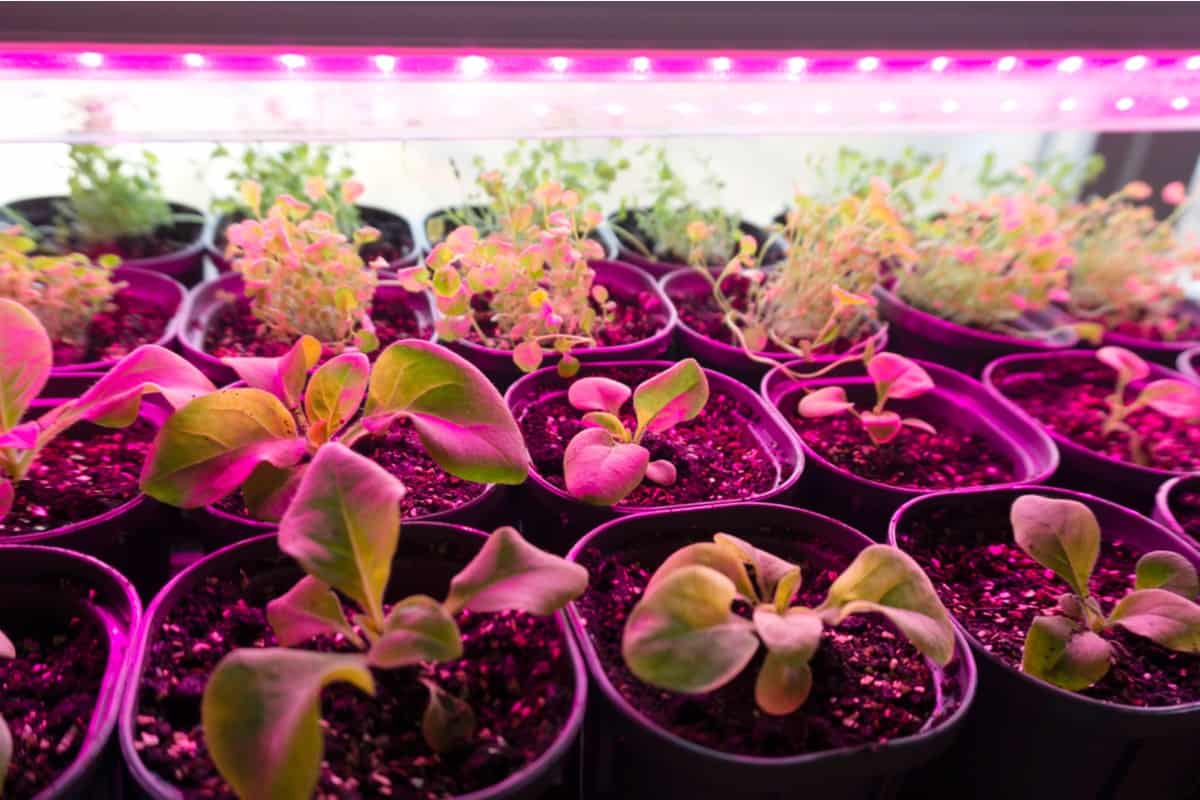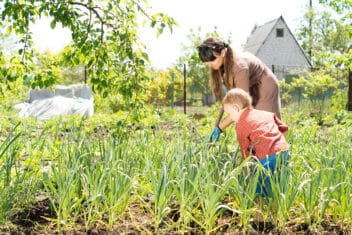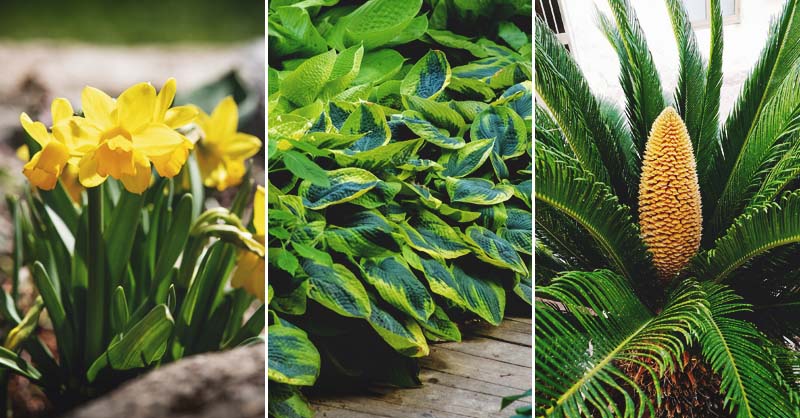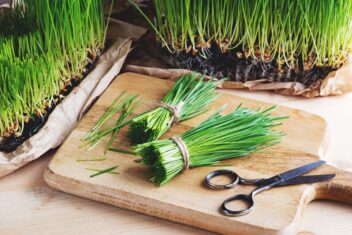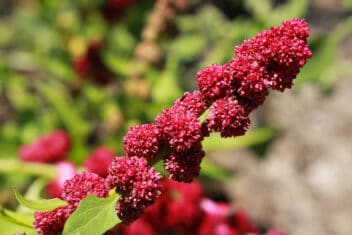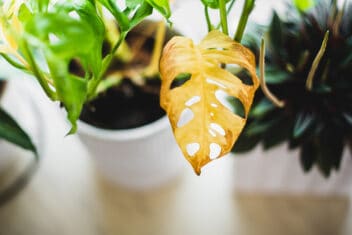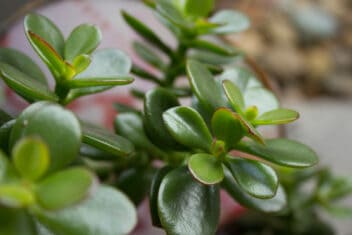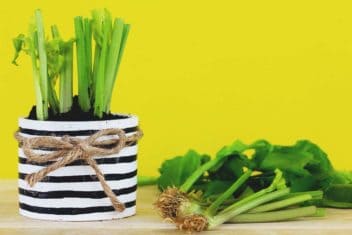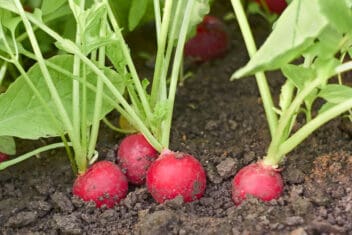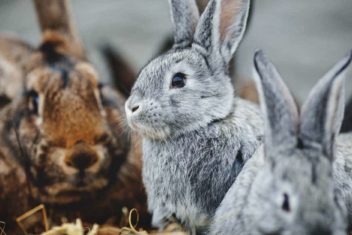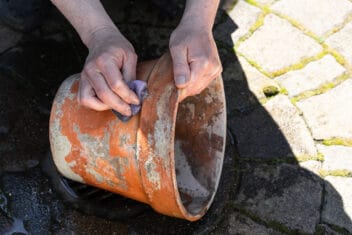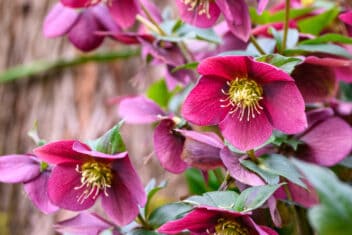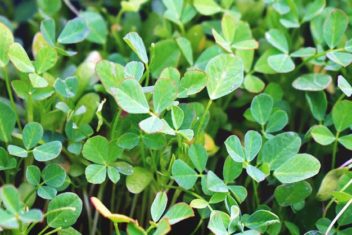The first few years I planted a vegetable garden, I either purchased seedlings from a nursery or started seeds indoors, using a sunny windowsill to provide the sunlight my plants needed.
Big mistake!
While you’ll save a lot of time and effort in buying seedlings that somebody else has already started, it is a monumental waste of money. While a packet of hundreds of seeds costs less than $3, you’ll pay much more for seedlings.
At the same time, using sunlight to provide the light your plants need isn’t a great idea, either. That’s because the weak energy provided by the sun isn’t always enough to get your plants going and off to a strong start. At best, it can cause them to germinate poorly, and at worst, it can lead to leggy seedlings.
That’s why, a few years in, I decided to invest in some grow lights instead.
Gardening with grow lights is a great way to maximize your yields while minimizing your efforts. While it’s relatively easy to do, there are some tips you will have to follow to make sure you are successful.
Here’s what you need to know.
Why Use Grow Lights?
There are countless benefits associated with using grow lights.
For starters, you’ll be able to grow many plants indoors that would not be possible outdoors. This could be either due to limited space or your climate.
You can grow fruits and vegetables, houseplants, orchids, and more. They’ll help your plants produce strong, green stems that hold up well to being transplanted.
You can even grow plants year-round under grow lights. This will make it possible for you to enjoy wintertime harvests of all your favorite foods, like salad greens and herbs.
Because grow lights provide the perfect spectrum of light at the right intensity, you don’t have to worry about your plants stretching toward the window in search of light.
They’ll have everything they need and will grow as strong as possible.
Tips for Choosing the Right Grow Lights
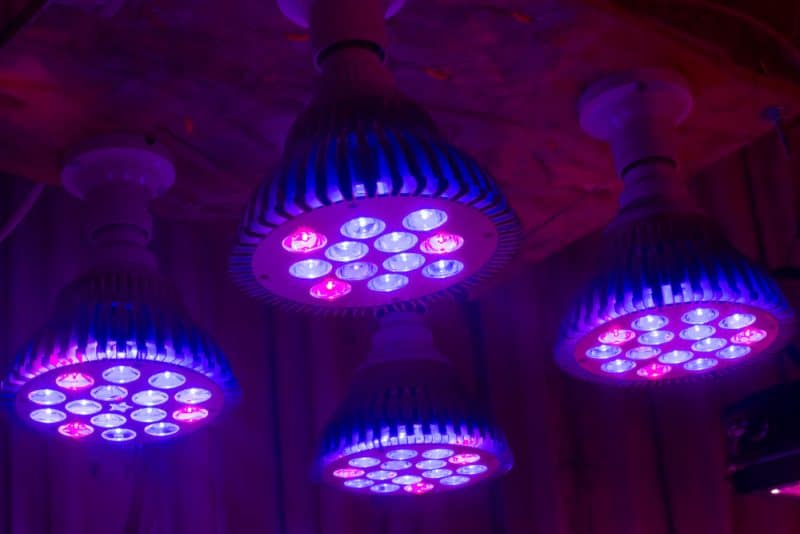
There are two things you will have to pay attention to more than anything else when you start gardening with grow lights – the color of the lights, and the type of bulb the lights have.
Color is important for one reason – it needs to mimic natural sunlight. Sunlight naturally has the complete spectrum of light, with all colors of the rainbow, from red to blue, included.
Plants grow best when they are positioned under full-spectrum lighting so you need to mimic this by offering a balance of cool and warm light with full-spectrum bulbs.
Full-spectrum lighting tends to work best for all kinds of plants, from houseplants to seedlings and more.
You will also need to decide between LED or fluorescent lights. Both can produce full-spectrum light, but LEDs are better for the environment – and your wallet.
They can be more expensive but you’ll likely notice major cost savings when it comes to your electric bill, so try not to let sticker shock deter you from choosing LEDs.
LED lights deliver the full spectrum light your plants need and can help with photosynthesis. They’re good for your plants and use half the electricity of fluorescent bulbs. Plus, they last five times longer. They don’t get overly hot and they are safer to use because they don’t shatter like glass, either.
How to Garden with Grow Lights
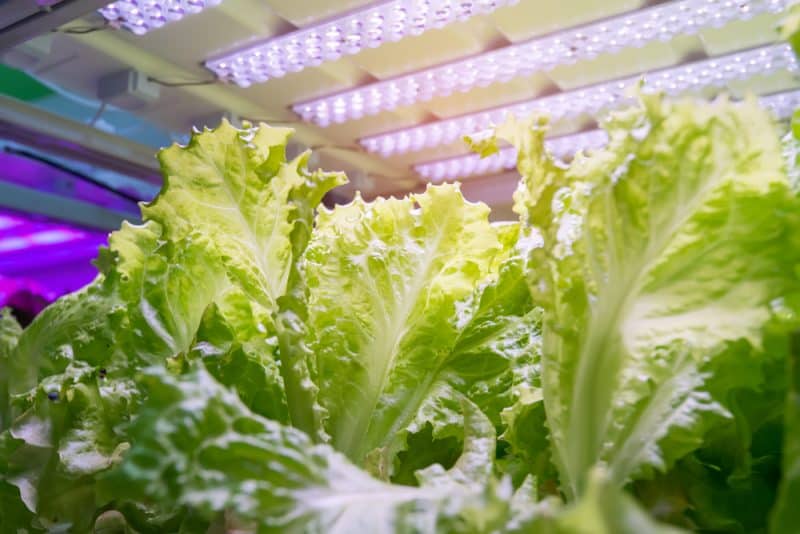
Looking for some tips on how to garden with grow lights? Look no further – I have everything you need right here.
1. Get the Intensity Right
Not all plants have the exact same needs when it comes to light intensity.
While a plant that is native to a dry, sunny climate like the Mediterranean (such as most herbs) will require intense light, a plant that evolved in the tropical jungle will prefer more muted lighting.
You’ll need to play around with your light intensity based on what you are growing. It will be determined by how bright the bulb is as well as how close the plant is to the light source.
If you have plants with different lighting needs, you can accommodate all of them by moving them closer to or further away from the light source.
There are some plants, like begonias, that thrive being only 10 or 11-inches away from the light, while others, like ivy, prefer to be almost 3-feet away!
Pay attention to your plants’ unique lighting requirements as you’re figuring out the proper intensity.
2. Get the Duration Right
A common mistake that many novice grow light users make (including me) is leaving their grow lights on 24/7.
Think about it – plants aren’t naturally exposed to light 24 hours a day when they’re being grown outdoors. They are exposed to regular periods of darkness and never more than 18 hours per day of light.
Plants need times of light and times of darkness, using the dark periods to respirate.
Respiration is an important part of growth and without it, you may notice that your plants aren’t as strong or have issues setting fruit and buds later on. This is another area where each plant’s individual needs differ, short-day plants, like azaleas, do well with less than 12 hours of light each day.
Long-day plants require up to 18 hours – this category includes most garden flowers and vegetables. Then, some are right in the middle, requiring around 8-12 hours. African violets are an example.
3. You May Need to Water More Often
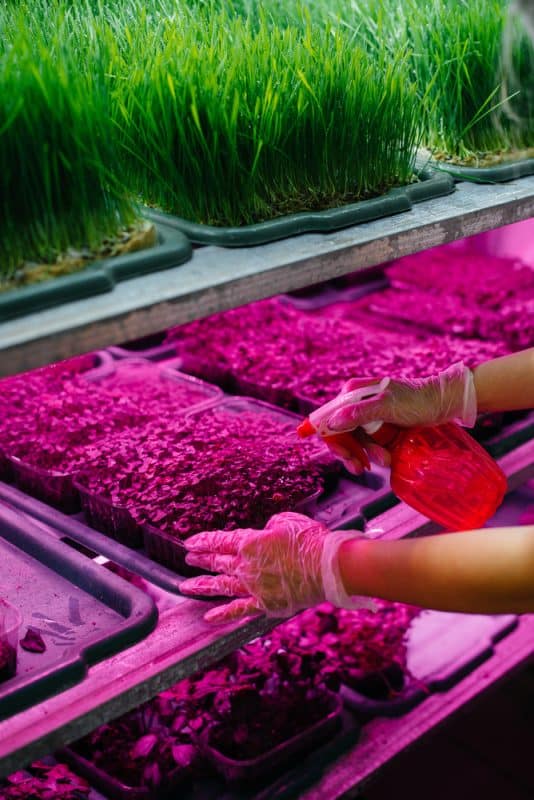
When you’re gardening with grow lights – particularly with fluorescent lights, which produce more heat – you may find that you need to water your plants more often.
Keep an eye out for signs of under-watering, like wilting and dry, crunchy leaves.
Make sure the soil is kept consistently moist while seedlings are germinating and mist plants regularly to ensure that they get the humidity they need.
4. It Might Not Be the Best Option for All Plants
Not all plants thrive when grown under grow lights, but I’ve yet to find a plant for which they didn’t work wonders.
Leafy greens and most other fruit and vegetable crops (along with houseplants and orchids) grow well under grow lights.
Do keep in mind that there are some plants for which it doesn’t make much sense to start seeds indoors – the list includes things like carrots, squash, and beets, all of which are fragile and don’t hold up well to being transplanted.
Skip growing these under grow lights unless you plan on keeping them there permanently – you won’t want to attempt transplanting these later on.
5. Consider Moving Plants Closer to (or Further from) the Lights
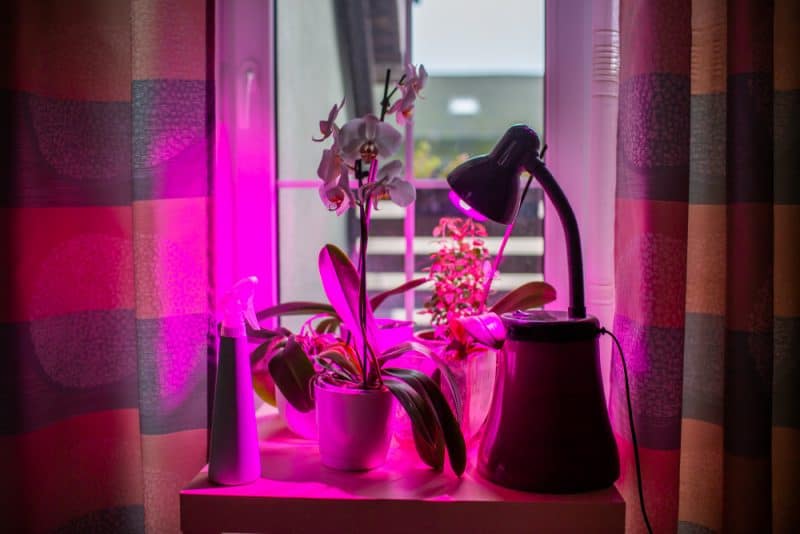
Overheating can occur if you have too many lights – but it can also happen if you have your plants too close to the lights.
Place your lights at least 12-18-inches away from your plants to start.
If it looks like your plants aren’t getting enough light, you can always move them closer later on.
As your plants grow taller, conversely, you may find that you have to raise the lights so the foliage isn’t brushing against the bottom of the light.
6. Don’t Forget to Fertilize
It’s important to be mindful of your plants’ nutrient needs when you are gardening with grow lights, as always.
The challenge with fertilizing fragile seedlings, especially those grown under grow lights, is that the intensity of the light combined with the added nutrients can burn the delicate young seedlings.
Using a natural liquid fertilizer diluted to a quarter of the recommended strength can help.
You’ll have to apply it more often – about once a week – but you won’t have to worry about damaging your plants.
7. Try a Timer
I mentioned earlier that grow lights don’t need to be on 24/7.
Remembering to shut the lights off when you go to bed, however, is another challenge entirely – especially if you have your grow lights set up in an area of your house that you don’t frequent often during the day.
Consider using a power strip with a built-in timer so you don’t have to remember to shut the lights off. That way, your system will be automated and you don’t have to worry about a thing.
Give Gardening with Grow Lights a Try This Planting Season
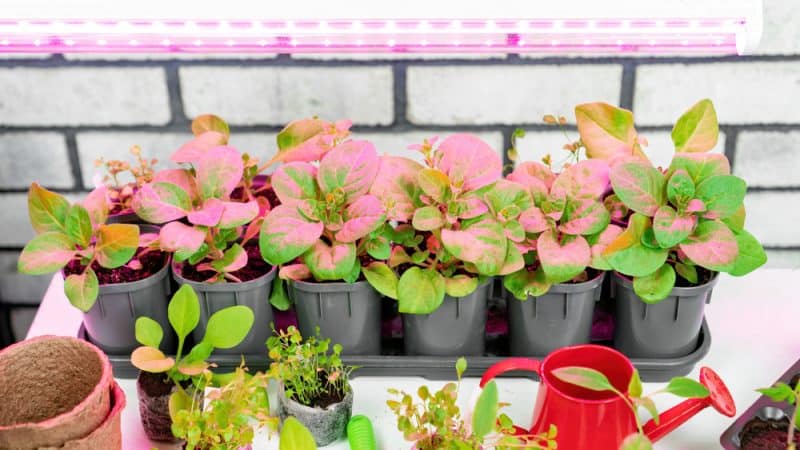
Trust me when I say this. Once you start using grow lights, you’ll never want to garden in any other way.
There is a slight learning curve involved with using them. However, they are so beneficial in boosting plant growth and overall health.
Give it a try yourself. There’s some trial and error involved.
However, your biggest challenge once you start using grow lights will be figuring out what to do with all the plants you wind up growing! Trust me – your germination rates will be off the charts.
Now that we have hopefully convinced you, here is an article describing the best grow lights, to make your plants happy.
